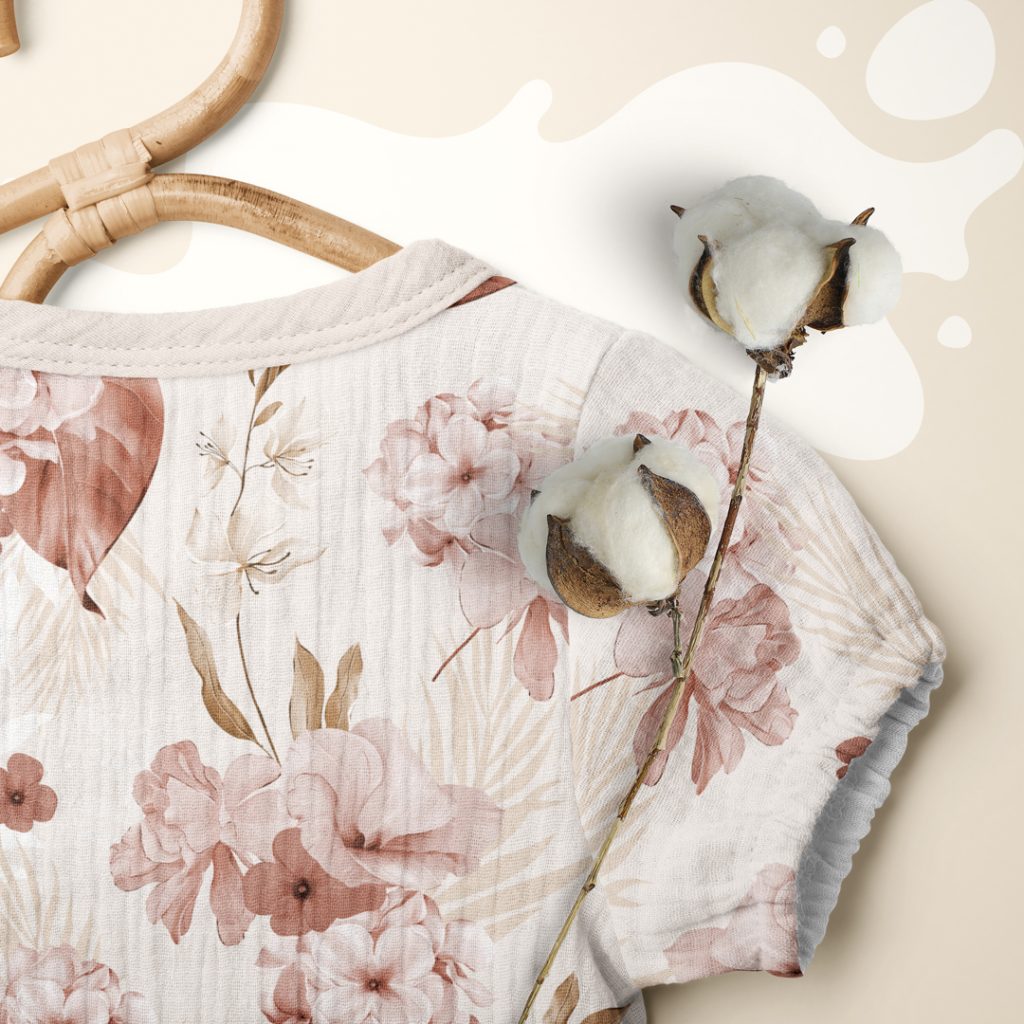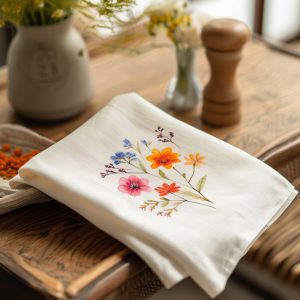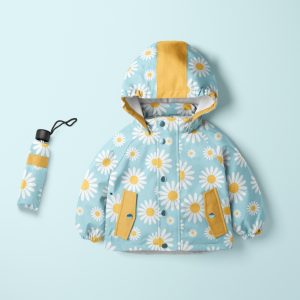Cotton, one of the oldest and most esteemed fabrics in the world, hides fascinating secrets within its fibers. From softness and comfort to temperature regulation, cotton is unparalleled in its versatility. In this article, we will not only explore what cotton is and where it comes from but also delve into the various types of cotton fabric, its properties, applications and more. Get ready for a journey through the world of cotton, where tradition meets modernity, and naturalness intertwines with practicality.
Table of Contents
- What is cotton and where does it come from?
- Types of cotton fabric
- Properties of cotton
- Does cotton wrinkle?
- What can be made from cotton? Its various applications
- Cotton – advantages:
- Cotton – disadvantages:
- Cotton or Polyester?
- Cotton – everything you need to know about it

What is cotton and where does it come from?
Cotton is a subtropical plant, meaning it thrives in warm and humid climates. The primary cotton-producing regions are currently India, China, the United States, Pakistan, and Brazil. However, this plant has been known since ancient times and has had diverse uses in various cultures throughout history.
During the flowering phase, the cotton shrub produces beautiful white or colorful flowers, from which capsules develop. Cotton fibers surround the seeds inside these capsules. When the mature fruits burst open, they reveal white, fluffy fibers ready for harvesting.
Traditionally, cotton harvesting required manual labor, but nowadays, many farms use harvesting machines. After harvesting, cotton undergoes a processing procedure involving cleaning, carding, and spinning. The result is cotton yarn, ready for various goods.
It’s worth noting that the history of cotton is as colorful as its fibers. The first mentions of cotton cultivation date back over 5000 years in India, and since then, this plant has conquered the world with its versatility and the comfort it offers in textile production. Today, cotton is a crucial raw material for the fashion industry and plays a vital role in household and medical items production, among others. This plant, originating from subtropical regions, forms the foundation for many aspects of our daily lives.
Types of cotton fabric
Cotton, as an incredibly versatile fabric, comes in various fabric types, mainly determined by the weave. Each type has its unique characteristics, allowing cotton to adapt to diverse consumer needs and preferences.
- Pure Cotton: This is the most popular and commonly used type of cotton fabric. It features a natural, breathable fiber weave, making it exceptionally skin-friendly. Pure cotton is ideal for producing everyday clothing and bed linens.
- Satin Cotton: This cotton variant has a smooth surface and a shiny finish, giving it an elegant and luxurious appearance. Satin cotton is often used for producing bed linens, evening dresses, and other special garments.
- Jersey Cotton: This fabric is soft, delicate, and elastic. Its weave is slightly looser, providing comfort and a perfect fit for clothing that adheres well to the body. It is ideal for lightweight, airy garments.
- Canvas Cotton: Characterized by thicker fibers, canvas cotton is more durable and is mainly used for making sturdy clothing and bags. Canvas cotton is also popular in furniture production, especially for items with a raw, industrial look.
Properties of cotton
- Thermal insulation: Cotton is a fabric that effectively insulates heat. It acts as a natural temperature regulator, making cotton clothes comfortable in both warm and cool weather.
- Easy dyeing: Cotton is easily dyed, allowing for a wide range of colors and patterns. This makes it attractive for fashion designers and textile manufacturers.
- Hygroscopicity: Cotton can absorb moisture, making it skin-friendly and suitable for everyday clothing. It acts as a natural absorbent, soaking up sweat and keeping the skin dry.
- Softness: Cotton fibers are soft and gentle on the skin, making cotton garments pleasant to wear. They are also suitable for individuals with sensitive skin.
- High-temperature resistance: Cotton is resistant to high temperatures, allowing it to be washed in hot water without concerns about losing quality or durability.
- Damage resistance: While cotton may not be as resistant to wear as some synthetic materials, it still exhibits sufficient resistance to mechanical damage. Properly cared for cotton can last a long time.
- Easy care: Cotton is easy to maintain and care for. It can be machine-washed, and cotton clothing typically does not require complicated ironing procedures.
Does cotton wrinkle?
Yes, cotton tends to wrinkle, which is one of its characteristic features. This phenomenon is mainly due to the low elasticity of the weave in cotton fibers. Cotton fibers are relatively soft and flexible, leading to a weave that does not maintain elasticity like other fabrics.
The wrinkling of cotton can be seen as both a disadvantage and an advantage, depending on the perspective. On one hand, cotton clothing may require more frequent ironing compared to garments made from smoother and stiffer materials. On the other hand, this characteristic can give clothes a relaxed and natural look, which is particularly appreciated in casual styles.
Although the wrinkling of cotton can pose a challenge, many people value this fabric for its natural appearance and comfortable wear. After all, the slightly looser character of cotton clothing is also an expression of authenticity and skin-friendliness.
What can be made from cotton? Its various applications
Due to its versatility, cotton finds application in numerous fields, serving to produce a wide range of items. Here are several areas where cotton plays a significant role:
- Clothing: Cotton is a primary material in the fashion industry, contributing to the production of shirts, pants, dresses, lingerie, and more. Its hygroscopic properties make it ideal for clothing worn directly against the skin. Cotton cretonne is a popular choice for clothing production.
- Bedding and towels: Cotton is commonly used to manufacture bed linens, pillowcases, and towels. Its softness and moisture-absorbing capability make it an excellent material for these applications.
- Household items: Cotton is present in various household items such as tablecloths, napkins, and cushions. Its natural appearance and pleasant touch contribute to a cozy home atmosphere. Cotton panama is perfect for elegant curtains.
- Mattresses and medical bedding: Thanks to its hygroscopicity and breathability, cotton is widely used in mattresses and medical bedding production. It is a skin-friendly material that promotes sleep hygiene.
- Hygiene products: Cotton is used in producing various hygiene products like cotton swabs, cosmetic pads, and tampons. Its natural properties make it safe for delicate areas of the body. Cotton waffle fabric is commonly used for kitchen towels.
- Baby products: Due to its softness and skin-friendliness, cotton is often used in baby clothes, bedding, and accessories. Single jersey is an ideal choice for baby clothing.
- Decorative fabrics: Cotton is employed to create decorative fabrics like curtains, throw pillows, and upholstery. Its natural appearance and a wide range of available patterns make it appreciated in interior design. Cotton gabardine is a popular choice for furniture upholstery, while satin adds a subtle sheen to home interiors.

Cotton – advantages:
- Naturalness: Cotton is a plant-based material, making it natural and biodegradable. This is particularly important in the context of environmental care.
- Hygroscopicity: Cotton can absorb moisture, making it ideal for clothing and bedding. It acts as a natural temperature regulator, ensuring comfort when worn.
- Breathability: Cotton fibers are breathable, making cotton garments suitable for warmer conditions by allowing the skin to breathe freely.
- Softness: Cotton is gentle on the skin, making garments made from this material comfortable to wear. This is crucial, especially for individuals with sensitive skin.
- Easy dyeing: Cotton is easily dyed, allowing for a variety of colors and patterns. This is significant in fashion and textile design.
- Versatility of applications: Cotton is used in clothing, bedding, household items, and the medical industry. Its versatility makes it widely employed in various fields.
- Allergy-friendly: Cotton is hypoallergenic, meaning it is unlikely to cause allergic reactions. This is important, especially for individuals with skin sensitivities.
Cotton – disadvantages:
- Wrinkling: Cotton tends to wrinkle, requiring more frequent ironing for garments made from this material. This is considered an inconvenience in terms of use.
- Washing requirements: Some cotton products may require special care during washing, especially concerning color retention. Some clothing items may shrink in hot water.
- Stain Absorption: Cotton tends to absorb stains, making it challenging to clean certain garments. This can be particularly troublesome with light-colored items.
In summary, despite having a few drawbacks, the numerous advantages of cotton make it one of the most popular materials in textile production worldwide. Many of these drawbacks can be minimized with proper care and storage of cotton products.
Cotton or Polyester?
- Origins:
- Cotton: Natural fiber derived from the cotton plant. Biodegradable and plant based.
- Polyester: Synthetic material made from chemical polymers.
- Physical Properties:
- Cotton: Soft, breathable, and skin-friendly. Absorbs moisture, providing comfort in warm conditions.
- Polyester: More durable, resistant to stains. Less prone to wrinkles than cotton but may be less breathable.
- Durability:
- Cotton: Less durable than polyester. Prone to wearing out, especially with frequent washing.
- Polyester: More durable, maintains shape and color better than cotton. Resistant to mechanical damage.
- Wrinkle and shrink resistance:
- Cotton: Tends to wrinkle easily, especially after washing.
- Polyester: Less prone to wrinkling and shrinking compared to cotton.
- Breathability:
- Cotton: Excellent breathability, suitable for warmer conditions.
- Polyester: Less breathable, may be less comfortable in hot weather.
- Production and ecology:
- Cotton: Cotton production may require significant water and pesticide use, but it is biodegradable.
- Polyester: Production process is more energy-intensive, but the material can be recycled.
Cotton – everything you need to know about it
In summary, cotton is an extremely important material that has found its place in our daily lives. It has been popular for centuries thanks to its unique properties and versatility. If you’re wondering why cotton is so prized, just look at its versatile uses and the unparalleled comfort it offers. This is what makes cotton one of the most indispensable raw materials in the world of textiles.




